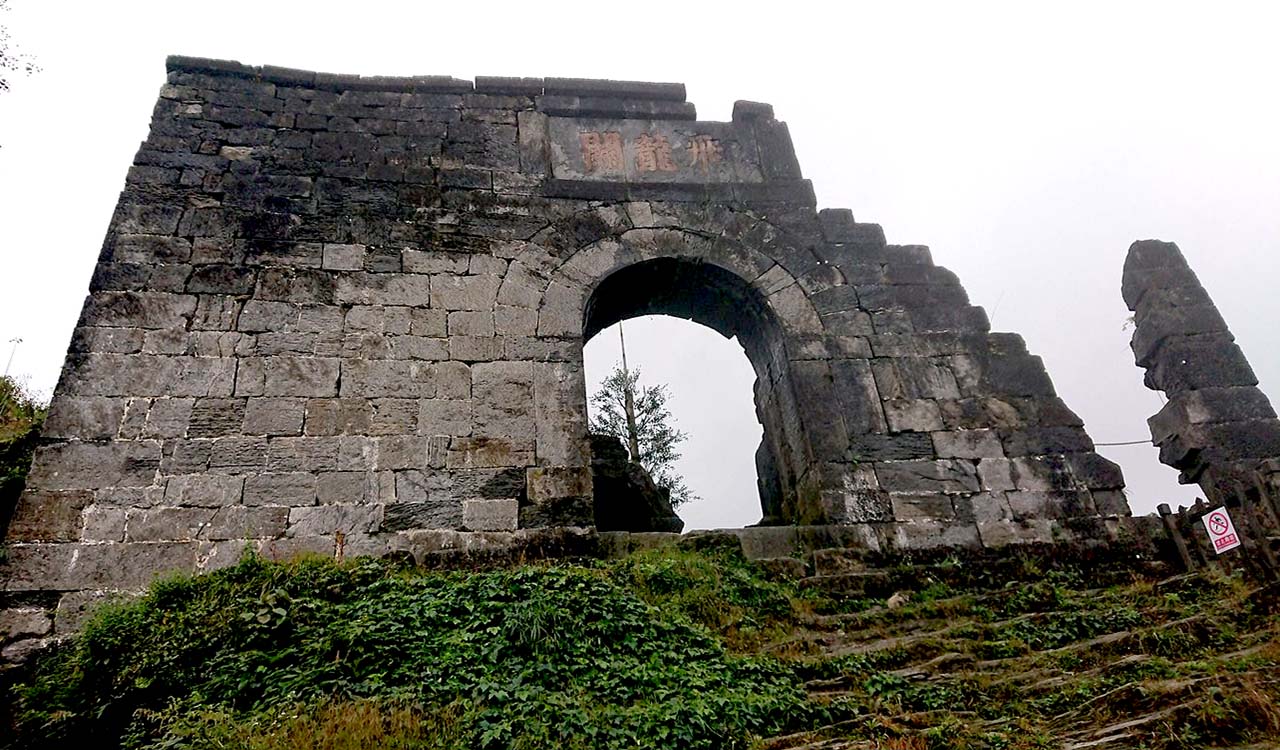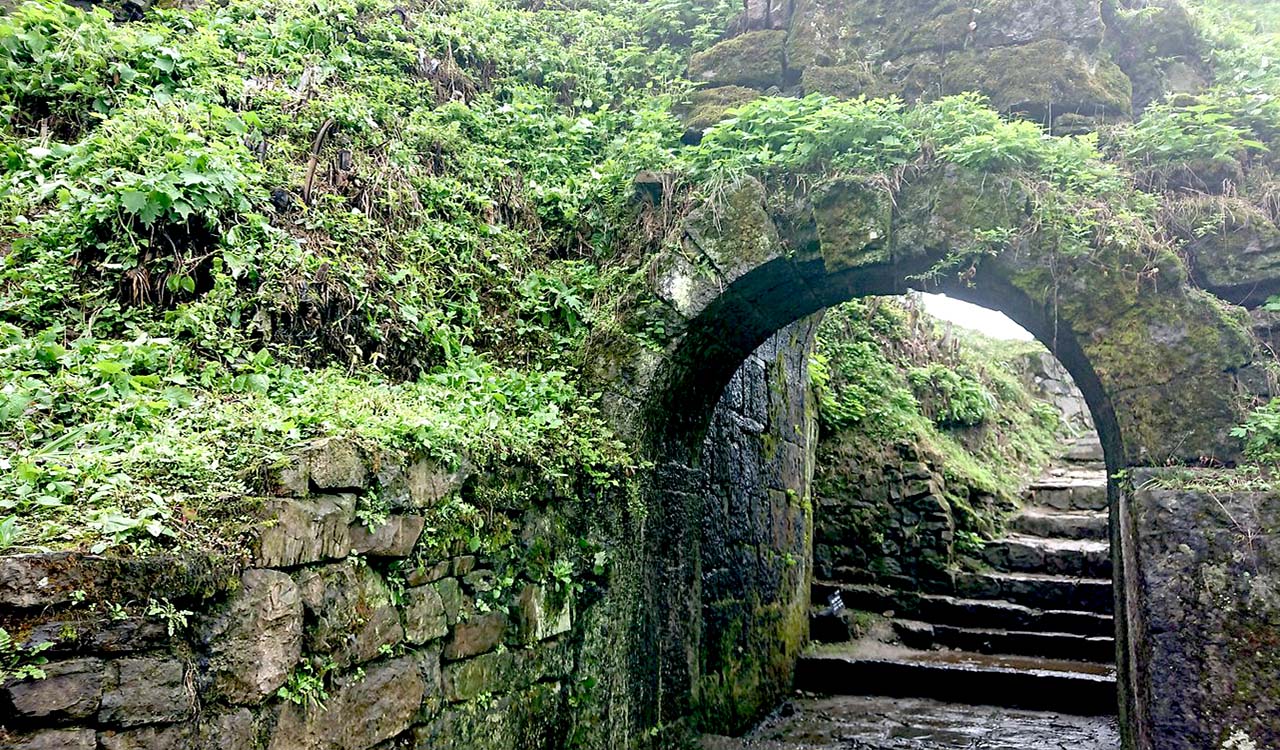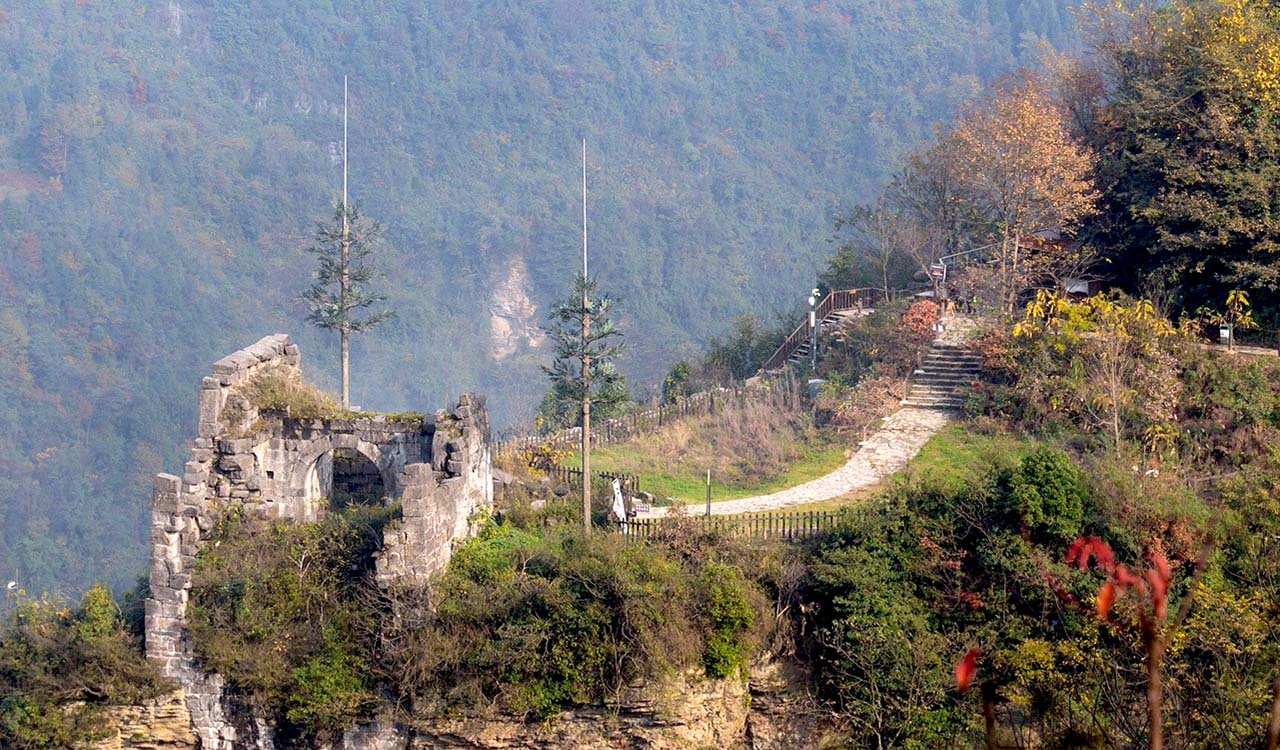The Site of Hailongtun Tusi Fortress is an important cultural heritage site in China, located in Longyan Mountain, Hailongtun Village, Gaoping Town, Huichuan District, Zunyi City, Guizhou Province.
Hailongtun, an ancient fortress nestled in the mountains of Guizhou, stands as a majestic symbol of China's rich history. Your journey to this UNESCO World Heritage site will be a blend of awe and intrigue. The fortress, with its formidable walls and gates, whispers tales of ancient battles and strategic brilliance. The panoramic views from the top are breathtaking, overlooking verdant valleys and mist-shrouded peaks. Strolling through the ruins, you can feel a deep connection to the past, imagining the life and times of the warriors who once guarded this stronghold. Hailongtun is a captivating destination for history buffs and nature enthusiasts alike, offering a unique glimpse into China's storied past.
Historical Background:The fortress was established in 1257 during the Southern Song Dynasty and served as the stronghold of the chiefdom of Bozhou, ruled by the Yang family, from the Southern Song to the Ming Dynasty. In 1600, after the defeat of the Bozhou Rebellion, the last tusi Yang Yinglong committed suicide and the castle was burned down.
Geographical Location:It is located on the Longyan Mountain, with a relative height of about 350 meters. It is surrounded by water on three sides and connected to the mountain on one side, making it a strategically located and difficult-to-access place.
Area:The total area of the site is 12.9 square kilometers, including the heritage area and the buffer zone.
Architectural Features
City Walls and Passes:There are nearly 6 kilometers long city walls, and 6 eastern passes including Tongzhu Pass, Tiezhu Pass, Feihu Pass, Feilong Pass, Chaotian Pass, Feifeng Pass, and 3 western passes including Hou Pass, Xi Pass, and Wan'an Pass.
Palace Sites:There are two groups of important building sites, the "Old Palace" and the "New Palace", each with an area of about 20,000 square meters. Besides, there are also remains such as the Gold and Silver Treasury, the Four-cornered Pavilion, the Quarry, the Drill Ground, the Circular Horse Path and the Watchtowers.
Military Defense System
Three Lines of Defense:The fortress had a three-line defense system. The first line of defense consisted of several passes, forcing enemies to spread into battle formation. The second line included the horse ranch, chicken farm, and other areas to further protect the core area. The third line, as the core area and the last barrier, consisted of important passes and city walls.
Advantageous Terrain:Surrounded by cliffs on all four sides with only one entrance from the mountain road, it was easy to defend and difficult to attack. The Flying Tiger Pass, for example, had a steep stairway with 36 stone stairs, which was very challenging for attackers.





